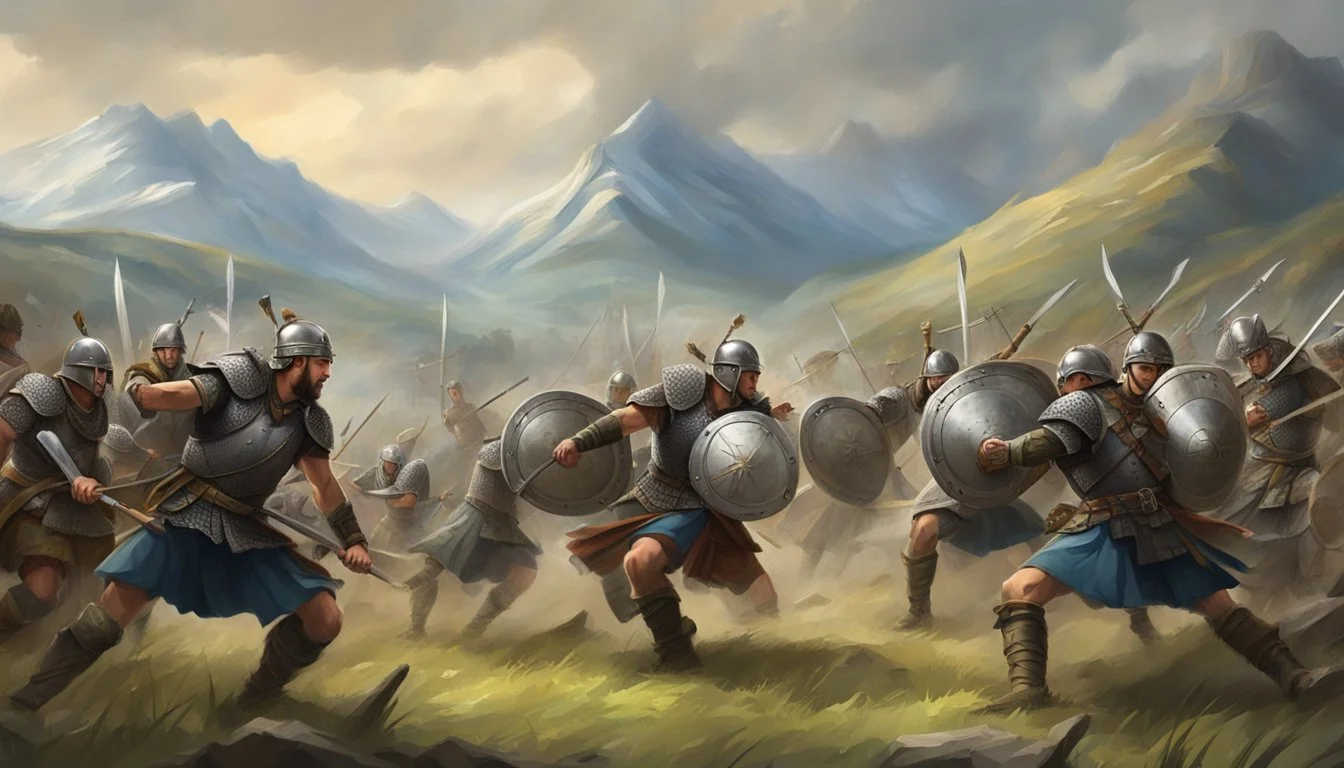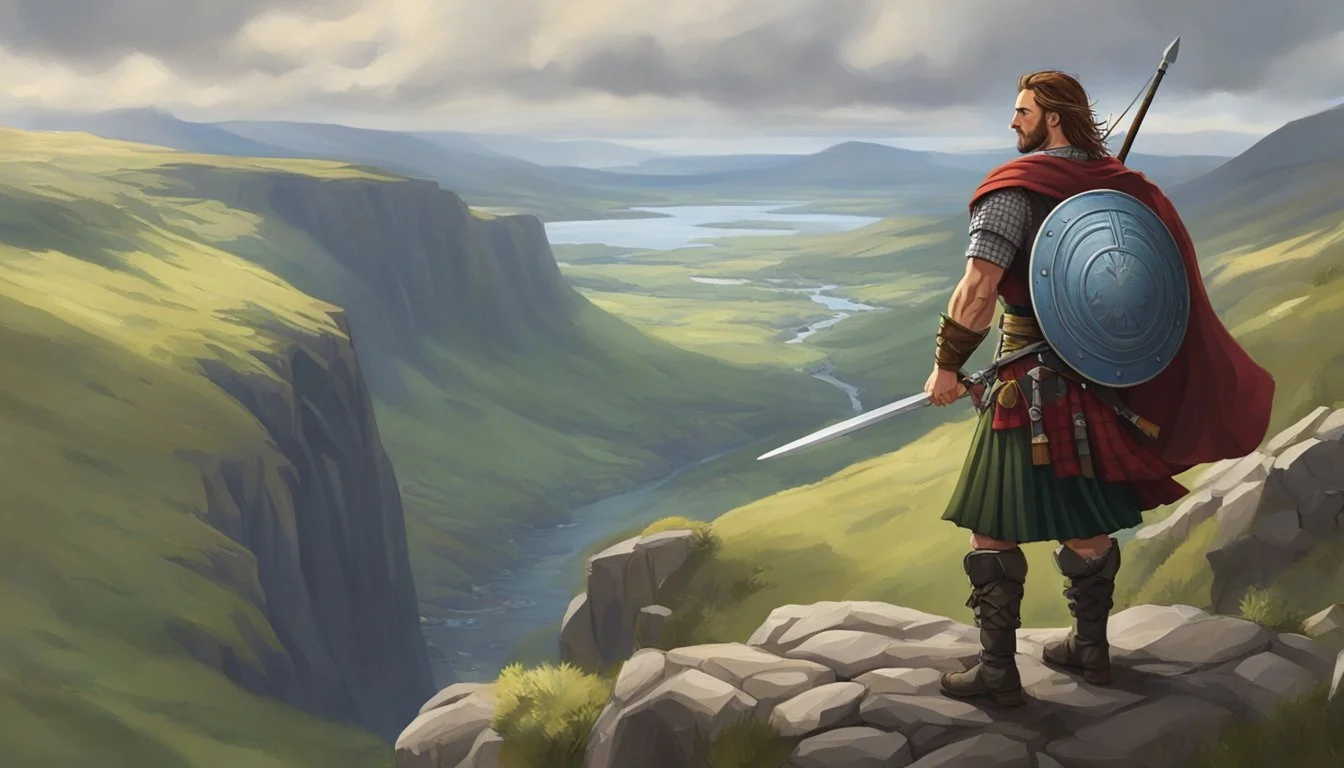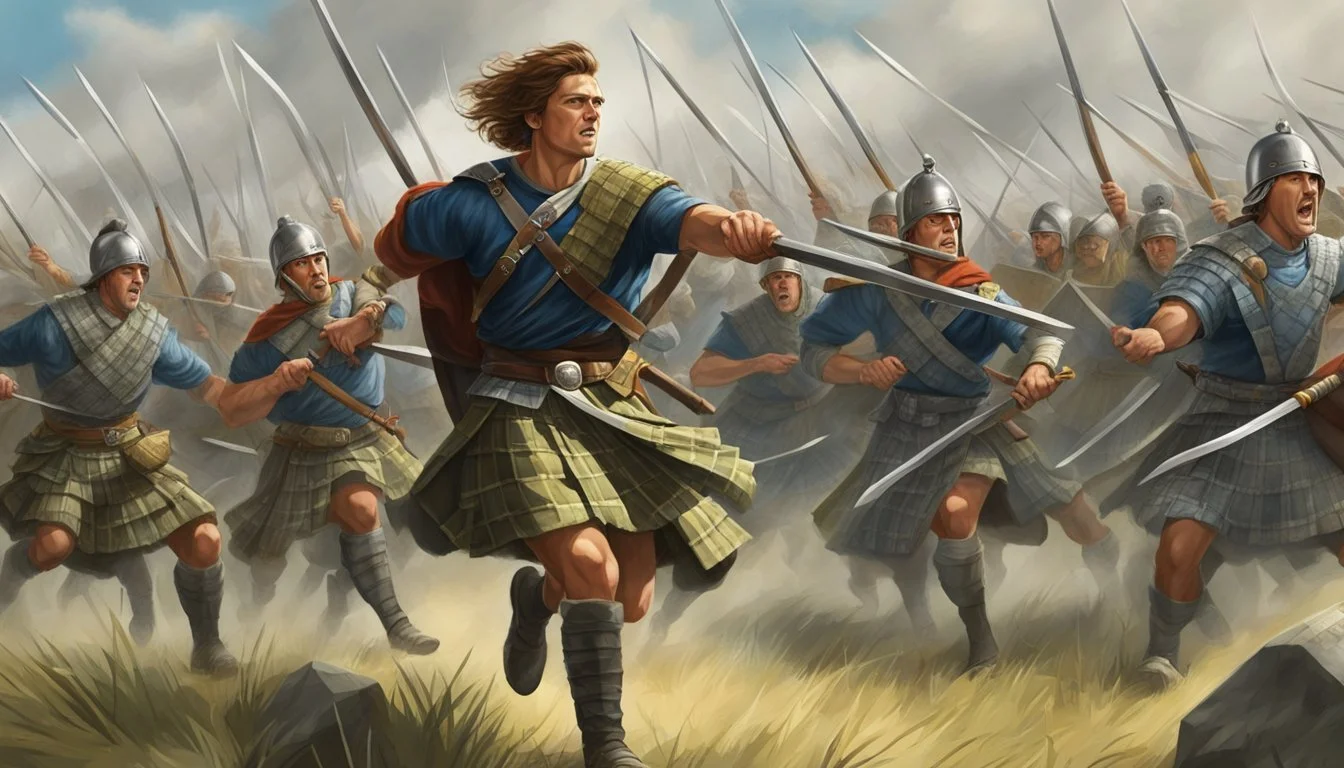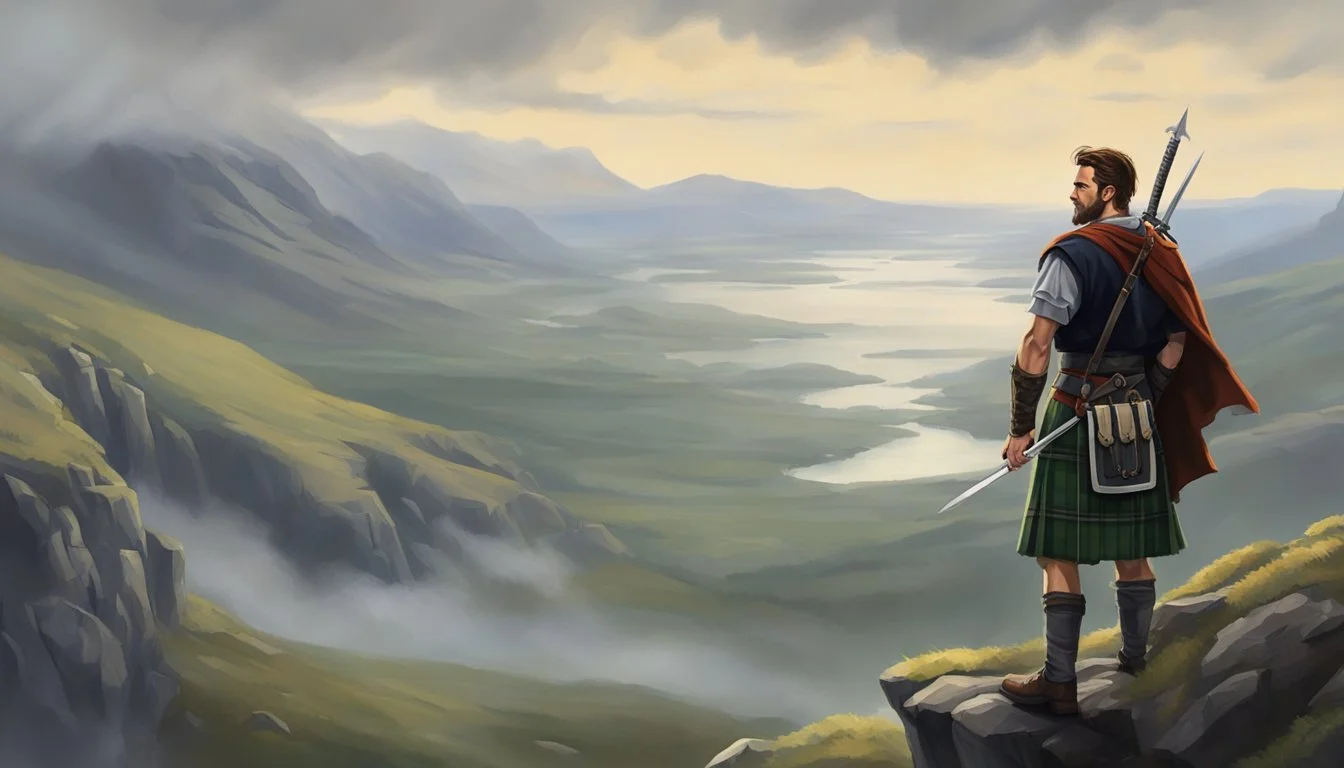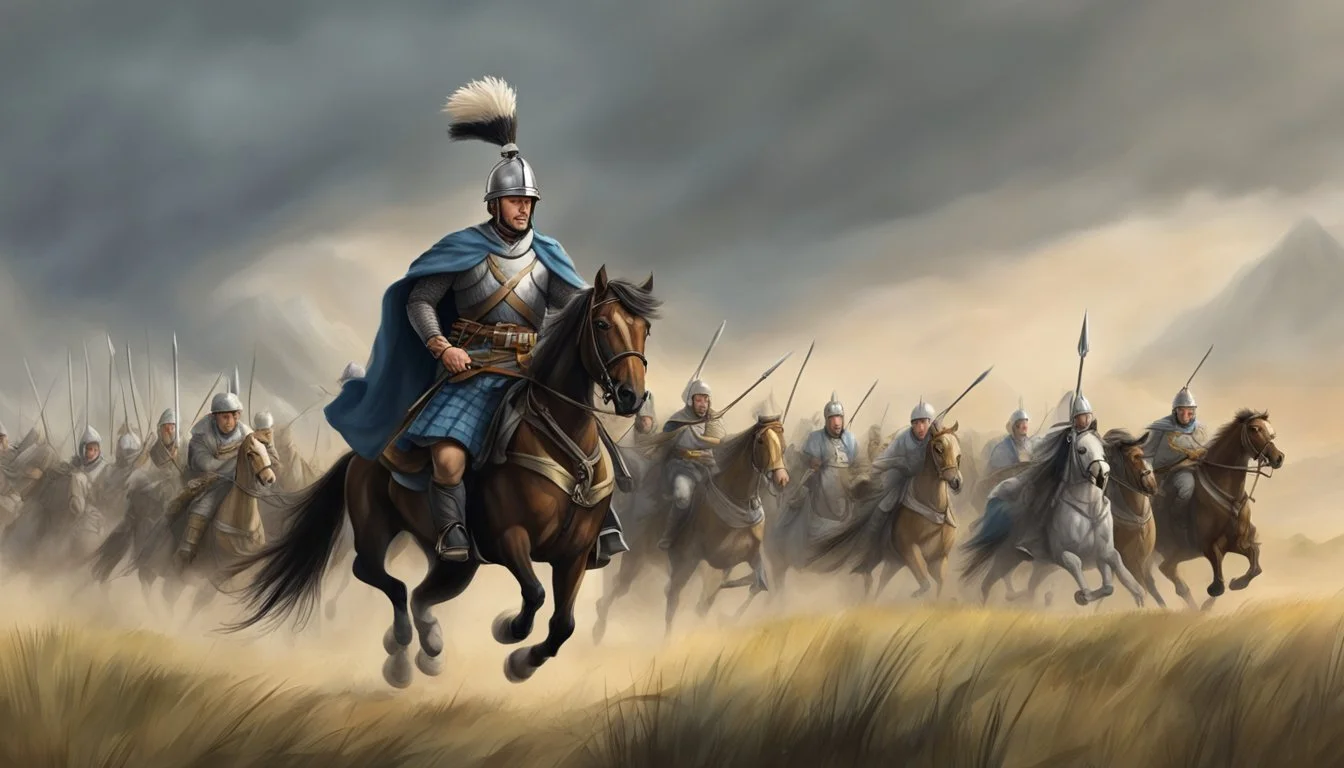Kilted Warrior: The Historical Hero of 'Braveheart'
William Wallace's Legacy Explored
William Wallace, the legendary Scottish warrior, has captured the imagination of millions through his portrayal in the epic film "Braveheart." The 13th-century hero led Scotland's fight for independence against England, becoming an enduring symbol of freedom and resistance.
While the movie "Braveheart" took significant liberties with historical facts, it successfully brought Wallace's story to a global audience. The film's depiction of Wallace as a kilted warrior, though historically inaccurate for the time period, has become an iconic image associated with Scottish identity and bravery.
Wallace's actual life and deeds were no less impressive than their cinematic counterparts. He united Scottish clans against English rule and achieved a remarkable victory at the Battle of Stirling Bridge in 1297. This real-life warrior's unwavering commitment to Scotland's independence continues to inspire people centuries after his death.
The Legend of William Wallace
William Wallace, a Scottish warrior and patriot, became a legendary figure in Scotland's fight for independence from England. His remarkable life and heroic deeds inspired generations and cemented his place in history as a national icon.
Early Life and Background
William Wallace was born around 1270, likely near Paisley in Renfrewshire, Scotland. His family belonged to the lower nobility, providing him with a modest upbringing. Wallace grew up during a tumultuous period in Scottish history, marked by political uncertainty and growing tensions with England.
As a young man, Wallace received education in Latin and French, unusual for someone of his social standing. This early education would later prove valuable in his leadership role.
The death of King Alexander III in 1286 left Scotland without an heir, leading to a power struggle that would shape Wallace's future.
Rise to Prominence
Wallace's journey to prominence began in 1297 with an act of defiance against English authority. He killed William Heselrig, the Sheriff of Lanark, in retaliation for the murder of his wife.
This bold action catapulted Wallace into the spotlight as a leader of the Scottish resistance. He quickly gathered a following of discontented Scots eager to challenge English rule.
Wallace's military prowess became evident at the Battle of Stirling Bridge in September 1297. His tactical genius led to a decisive victory over a much larger English force, boosting Scottish morale and his own reputation.
Guardian of Scotland
Following the triumph at Stirling Bridge, Wallace was appointed Guardian of Scotland in March 1298. This title recognized his role as the de facto leader of the Scottish resistance.
As Guardian, Wallace led diplomatic efforts, writing letters to European leaders seeking support for Scotland's cause. He also conducted raids into northern England, demonstrating his military acumen.
Wallace's tenure as Guardian was brief but impactful. His most significant challenge came at the Battle of Falkirk in July 1298, where he faced King Edward I's army. Despite a valiant effort, the Scots were defeated.
After Falkirk, Wallace resigned as Guardian but continued to fight for Scottish independence until his capture in 1305.
Historical Context
Scotland's struggle for independence in the late 13th and early 14th centuries shaped the nation's future. This period saw significant political upheaval, military conflicts, and the rise of legendary figures who would leave their mark on Scottish history.
Scotland in the Late 13th Century
Scotland faced turbulent times after the death of King Alexander III in 1286. His heir, Margaret, Maid of Norway, died en route to claim the throne. This succession crisis led to competing claims for the Scottish crown.
John Balliol eventually became king in 1292, but his reign was short-lived. Edward I of England, known as "Hammer of the Scots," saw an opportunity to assert control over Scotland. He forced Balliol to abdicate in 1296, initiating a period of English rule.
The Scottish nobility resented English dominance. This resentment fueled the desire for independence and set the stage for the upcoming conflict.
The First War of Scottish Independence
The war began in 1296 when the Scots rebelled against English rule. William Wallace emerged as a key figure, leading Scottish forces to victory at the Battle of Stirling Bridge in 1297.
Edward I retaliated, defeating Wallace at the Battle of Falkirk in 1298. The conflict continued for years, with periods of intense fighting interspersed with uneasy truces.
Robert the Bruce, initially aligned with the English, switched sides and was crowned King of Scots in 1306. His victory at the Battle of Bannockburn in 1314 was a turning point in the war.
Key Figures of the Era
William Wallace: A Scottish knight who became a leader in the resistance against English rule. His execution in 1305 made him a martyr for Scottish independence.
Edward I: The English king who sought to dominate Scotland. His military campaigns and political maneuvering shaped much of the conflict.
Robert the Bruce: Initially a supporter of John Balliol, he later claimed the Scottish throne. Bruce's leadership and military skills were crucial in securing Scottish independence.
John Balliol: Briefly king of Scotland before being forced to abdicate by Edward I. His reign highlighted the complex political dynamics of the time.
Edward II: Succeeded his father Edward I but lacked his military prowess. His defeat at Bannockburn marked a significant setback for English ambitions in Scotland.
Major Battles of the Conflict
William Wallace's campaign against English rule included two pivotal engagements that shaped the course of the Scottish Wars of Independence. These battles demonstrated Wallace's tactical prowess and the challenges faced by the Scottish forces.
The Battle of Stirling Bridge
On September 11, 1297, Wallace and Andrew de Moray led Scottish forces to a decisive victory at Stirling Bridge. The English army, commanded by John de Warenne and Hugh de Cressingham, vastly outnumbered the Scots.
Wallace and Moray positioned their troops strategically on the north side of the River Forth. They allowed a portion of the English army to cross the narrow bridge before attacking.
This tactic trapped the English forces on both sides of the river. Unable to maneuver effectively, the English suffered heavy losses. Cressingham was killed in the battle, and Warenne retreated to Berwick.
The Battle of Stirling Bridge marked Wallace's most significant military achievement. It boosted Scottish morale and established Wallace as a formidable leader in the fight for independence.
The Battle of Falkirk
On July 22, 1298, Wallace faced King Edward I's army at Falkirk. Despite initial success, this battle ended in defeat for the Scottish forces.
Wallace arranged his infantry into circular formations called schiltrons. These defensive positions initially held strong against English cavalry charges.
However, Edward I's longbowmen proved devastating. Their arrows broke up the Scottish formations, allowing cavalry to penetrate the schiltrons.
The Scottish cavalry, mainly composed of nobles, abandoned the field early in the battle. This left Wallace's infantry exposed and overwhelmed.
Wallace managed to escape, but the defeat at Falkirk marked the end of his military campaigns. It highlighted the challenges faced by Scottish forces against England's superior resources and tactics.
Cultural Significance and Symbolism
The visual elements associated with "Braveheart" have become iconic representations of Scottish identity and heritage. These symbols evoke a sense of national pride and warrior spirit.
The Kilt and Tartan
The kilt stands as a powerful emblem of Scottish culture. Historically, kilts were worn by Highlanders as practical garments suited to the rugged terrain. Tartan patterns identified clan affiliations and regional origins.
In "Braveheart," William Wallace's kilt became a symbol of defiance against English rule. The film popularized the image of kilted warriors, though it's worth noting that widespread kilt-wearing came later in Scottish history.
Today, the Braveheart Tartan carries special significance. It represents Scottish independence and the enduring spirit of rebellion. Many wear this tartan to express connection to their heritage or admiration for Wallace's legacy.
Face Paint and Highland Traditions
Blue face paint features prominently in "Braveheart" as a striking visual element. This depiction draws inspiration from ancient Pictish and Celtic warrior traditions.
Historically, Picts were known to use blue woad dye for body decoration. While not strictly accurate for Wallace's time, the face paint in the film serves as a powerful cinematic device.
It symbolizes fierce determination and tribal unity. The distinctive blue markings have become strongly associated with Scottish warrior culture in popular imagination, despite being more artistic license than historical fact.
Braveheart: The Film vs. Historical Fact
Mel Gibson's 1995 epic "Braveheart" captured audiences worldwide with its portrayal of Scottish hero William Wallace. The film blends historical events with dramatic storytelling, creating a compelling narrative that diverges from historical accuracy in several key areas.
Portrayal of William Wallace
"Braveheart" depicts Wallace as a rugged highlander in a kilt, wielding a massive claymore sword. In reality, Wallace was likely a lowland Scot from a noble family. He would have worn contemporary 13th-century clothing, not the anachronistic kilts shown in the film.
The movie portrays Wallace as a commoner seeking revenge for his wife's death. Historical records, however, suggest he was motivated by political and nationalistic reasons rather than personal vendettas.
Wallace's physical appearance in the film, with long hair and blue face paint, is more artistic license than historical fact. Scottish warriors of that era did not typically use woad face paint, a practice associated with much earlier Pictish tribes.
Historical Inaccuracies
The film's depiction of the Battle of Stirling Bridge omits the bridge entirely, a crucial element of Wallace's actual tactical victory. This simplification alters the historical narrative significantly.
"Braveheart" introduces Princess Isabella as Wallace's love interest, but this is purely fictional. Isabella was only a child during Wallace's lifetime and didn't arrive in England until after his death.
The practice of "jus primae noctis" (right of the first night) is central to the film's plot but has no historical basis in medieval Scotland. It's a myth that has been perpetuated in various works of fiction.
Film's Impact on Scottish Identity
Despite its inaccuracies, "Braveheart" had a profound impact on Scottish cultural identity. The film reignited interest in Scottish history and nationalism.
Tourism in Scotland saw a significant boost following the film's release. Sites associated with Wallace, such as the Wallace Monument, experienced increased visitor numbers.
The movie's portrayal of Scottish independence resonated with many Scots, potentially influencing political discussions about Scotland's relationship with the United Kingdom.
While historians critique its factual errors, "Braveheart" remains a powerful cultural touchstone, blending historical elements with cinematic storytelling to create an enduring, if romanticized, vision of Scottish history.
Legacy and Memorials
William Wallace's legacy as a Scottish hero has endured for centuries. His unwavering commitment to Scottish independence inspired generations of Scots and continues to captivate people worldwide.
Numerous monuments honor Wallace's memory across Scotland. The National Wallace Monument near Stirling stands as a prominent tribute, attracting visitors eager to learn about his life and sacrifices.
Wallace's story gained global recognition through the 1995 film "Braveheart." While historically inaccurate in parts, the movie significantly boosted interest in Wallace and Scottish history.
Several statues of Wallace can be found in Scottish cities, including Aberdeen and Stirling. These serve as reminders of his bravery and the values he fought for.
Wallace's resilience in the face of adversity has made him a symbol of Scottish national identity. His image often appears on various Scottish products and tourist memorabilia.
Annual events and reenactments celebrate Wallace's legacy, keeping his story alive for new generations. These gatherings foster a sense of pride in Scottish heritage and history.
The William Wallace Sword, housed in the National Wallace Monument, stands as a tangible link to the past. Though its authenticity is debated, it remains a powerful symbol of Wallace's struggle.
Influential Figures Related to 'Braveheart'
Two key figures played significant roles in shaping the legend of William Wallace and the fight for Scottish independence. Blind Harry's poem immortalized Wallace's exploits, while Robert the Bruce led Scotland to freedom.
Blind Harry and the Wallace Poem
Blind Harry, a 15th-century Scottish poet, wrote "The Wallace" - an epic poem that became the primary source of William Wallace's legend. Though written nearly 200 years after Wallace's death, the poem greatly influenced public perception of the Scottish hero.
Harry's work blended historical facts with romantic embellishments, creating a heroic image of Wallace. The poem portrayed Wallace as a towering figure, both physically and morally, fighting against English oppression.
Many scenes in "Braveheart" draw inspiration from Harry's work, including Wallace's secret marriage and his wife's tragic fate. While historically questionable, these elements added emotional depth to the film's narrative.
Robert the Bruce and Scottish Independence
Robert the Bruce, King of Scots from 1306 to 1329, played a crucial role in Scotland's fight for independence. Unlike his portrayal in "Braveheart," Bruce was a complex figure who initially supported the English crown before embracing the cause of Scottish freedom.
Bruce's military prowess and political acumen were instrumental in securing Scottish independence. His victory at the Battle of Bannockburn in 1314 dealt a decisive blow to English ambitions in Scotland.
In "Braveheart," Bruce is depicted as conflicted and influenced by Wallace's actions. While the film takes liberties with their relationship, it captures the essence of Bruce's transformation from a pragmatic nobleman to a national hero.
Bruce's legacy as the leader who achieved Scottish independence complements Wallace's role as a symbol of resistance and courage.


